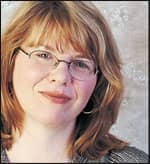 |
“Most US Baby Boomers are not prepared for their retirement, and neither are the US and world economies. Boomers can help mitigate the consequences by remaining in the workforce beyond the traditional retirement age.”
—ERIC D. BEINHOCKER, DIANA FARRELL, AND EZRA GREENBERG,
THE MCKENZIE QUARTERLY, NOVEMBER 2008
They have lived through war and peace, seen Presidents fall by assassin and vanity; they “found” themselves with transcendental meditation, and found old friends on Facebook. They are 78 million strong. They are Baby Boomers, and by 2030, they will be age 65 and older, the age traditionally associated with a leisurely retirement filled with golf, extended vacations, entertaining grandchildren, and senior discounts. Unfortunately, about 69% of Boomers anticipate working past the traditional retirement age and into their “golden years.” The reason is multi-faceted. Of course, a less-than-stellar economy, cost of living, rising medical costs, a plummeting stock market, bank and business closures, loss of income…the list is endless. Another red flag preventing the financial security of aging Americans is the predicted depletion of Social Security by 2037 and Medicare insolvency by 2017. In fact, AARP recently conducted a survey that found one in five people ages 55 to 64 were considering delaying their retirement for economic reasons. One in four people ages 45 to 54 were also expecting to retire later…much later. (Apparently, most of us Baby Boomers can forget about the cozy retirement our parents and their parents enjoyed.)
Fortunately, Boomers are more physically active and health conscious than previous generations, as well as more well-informed about the latest news in health news, products, and services that will enhance quality of life, as well as extend longevity. This is where the physical medicine profession can benefit…by keeping an entire generation of energetic seniors in the best health possible, so they can do the best job possible. (In fact, in late March, the Medicare Patient Access to Physical Therapists Act (S950), which would allow Medicare Part B beneficiaries direct access to outpatient physical therapy without a physician’s referral, was reintroduced to the House.)
This is also an excellent opportunity for facility owners to expand physical and occupational therapy practices by offering ancillary fitness and preventive programs to therapy clients, as well as for individuals who would like to have their fitness programs professionally customized and monitored, although they do not require acute or extended therapy. As for the aging clients who spent the first part of their lives “turning on and tuning out” and the second part of their lives being physically active and health conscience, and the third part of their lives pursuing a new (or continuing) profession, such a plan will keep them fit for many years to come.
If we can’t have retirement, at least we’ll have our health.
—Rogena Schuyler Silverman
Editor’s Note: Have a comment? A suggestion? A critique? Rehab Management encourages its readers’ input. Please contact .




